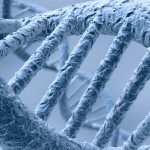Lien vers Pubmed [PMID] – 16737967
J. Biol. Chem. 2006 Aug;281(34):24462-71
Two genes encoding proteins related to large subunits of Rubisco were identified in the genome of the planktonic cyanobacterium Microcystis aeruginosa PCC 7806 that forms water blooms worldwide. The rbcL(I) gene belongs to the form I subfamily typically encountered in cyanobacteria, green algae, and land plants. The second and newly discovered gene is of the form IV subfamily and widespread in the Microcystis genus. In M. aeruginosa PCC 7806 cells, the expression of both rbcL(I) and rbcL(IV) is sulfur-dependent. The purified recombinant RbcL(IV) overexpressed in Escherichia coli cells did not display CO(2) fixation activity but catalyzed enolization of 2,3-diketo-5-methylthiopentyl-1-phosphate, and the rbcL(IV) gene rescued a Bacillus subtilis MtnW-deficient mutant. Therefore, the Microcystis RbcL(IV) protein functions both in vitro and in vivo and might be involved in a methionine salvage pathway. Despite variations in the amino acid sequences, RbcL(IV) shares structural similarities with all members of the Rubisco superfamily. Invariant amino acids within the catalytic site may thus represent the minimal set for enolization, whereas variations, especially located in loop 6, may account for the limitation of the catalytic reaction to enolization. Even at low protein concentrations in vitro, the recombinant RbcL(IV) assembles spontaneously into dimers, the minimal unit required for Rubisco forms I-III activity. The discovery of the coexistence of RbcL(I) and RbcL(IV) in cyanobacteria, the ancestors of chloroplasts, enlightens episodes of the chaotic evolutionary history of the Rubiscos, a protein family of major importance for life on Earth.


